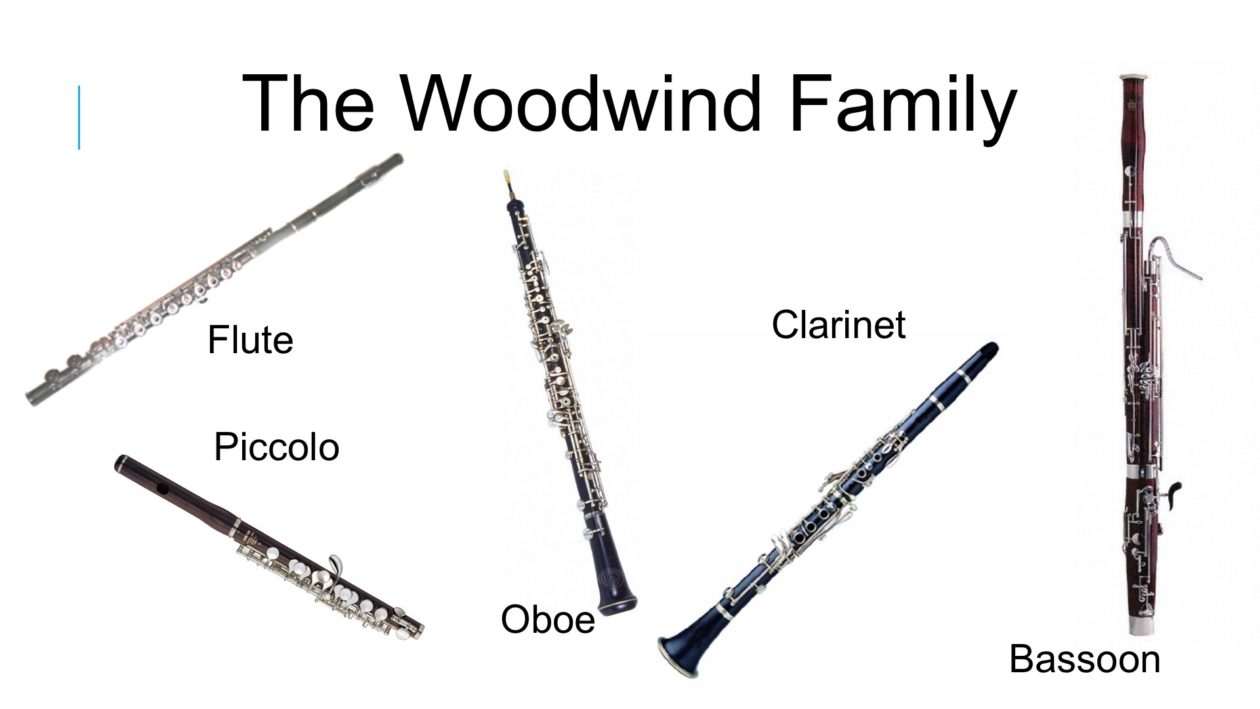 Woodwind instruments require the musician to blow air through. Most Woodwind instruments use a reed (small piece of wood) at the point where the musician must blow and it is the movement of the air passing the reed that causes the reed to vibrate and create a sound.
Woodwind instruments require the musician to blow air through. Most Woodwind instruments use a reed (small piece of wood) at the point where the musician must blow and it is the movement of the air passing the reed that causes the reed to vibrate and create a sound.
Flute and Piccolo
Flute and Piccolo are the only Woodwind instruments that do not use a reed. For these instruments, the musician must blow an accurate stream of air across a lip plate. This splits the airstream, causing a vibration in the same way as a whistle.
The Piccolo is the smallest Woodwind instrument and makes the highest sound in the orchestra. The flute is slightly larger and makes the second highest sound.
Oboe and Clarinet
While the Oboe and Clarinet look similar from a distance, they are very different to play. The Clarinet uses a single reed which is strapped to a mouthpiece while the oboe has a double reed.
The Bassoon
The Bassoon is the biggest instrument in the Woodwind family and therefore the lowest sounding. It uses a double reed similar to an Oboe.
The Saxophone
As a relatively recent invention (1840), the saxophone has never become a common instrument in orchestral music. It is today more commonly associated with Jazz and Funk genres than orchestral music.
Designed by Adolph Sax to be louder and more powerful than previous Woodwind instruments, the Saxophone uses a single reed and mouthpiece, similar to a Clarinet.
Despite being less common than other woodwind instruments, some composers have made good use of the Saxophone’s powerful tone and impressive range of sounds.

